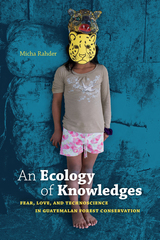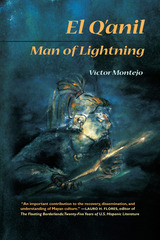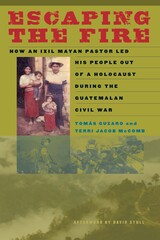5 start with E start with E



During the height of the Guatemalan civil war, Tomás Guzaro, a Mayan evangelical pastor, led more than two hundred fellow Mayas out of guerrilla-controlled Ixil territory and into the relative safety of the government army's hands. This exodus was one of the factors that caused the guerrillas to lose their grip on the Ixil, thus hastening the return of peace to the area.
In Escaping the Fire, Guzaro relates the hardships common to most Mayas and the resulting unrest that opened the door to civil war. He details the Guatemalan army's atrocities while also describing the Guerrilla Army of the Poor's rise to power in Ixil country, which resulted in limited religious freedom, murdered church leaders, and threatened congregations. His story climaxes with the harrowing vision that induced him to guide his people out of their war-torn homeland.
Guzaro also provides an intimate look at his spiritual pilgrimage through all three of Guatemala's main religions. The son of a Mayan priest, formerly a leader in the Catholic Church, and finally a convert to Protestantism, Guzaro, in detailing his religious life, offers insight into the widespread shift toward Protestantism in Latin America over the past four decades.
Riveting and highly personal, Escaping the Fire ultimately provides a counterpoint to the usual interpretation of indigenous agency during the Guatemalan civil war by documenting the little-studied experiences of Protestants living in guerrilla-held territory.

Seibal is a major ruin of the southern Maya lowlands, its vast ceremonial center covering several high hills on the banks of the Pasión River in the Guatemalan Department of Petén. In five volumes published over a 15-year period, the archaeological team headed by Gordon R. Willey presents a comprehensive review of their fieldwork from 1964 to 1968 and the results of many years of subsequent data analysis.
The volumes also report on explorations in the peripheral settlements outside of the Seibal center and provide a regional view of the evolution of lowland Maya culture from the Middle and Late Preclassic through the Late Classic periods.

Seibal is a major ruin of the southern Maya lowlands, its vast ceremonial center covering several high hills on the banks of the Pasión River in the Guatemalan Department of Petén. In five volumes published over a 15-year period, the archaeological team headed by Gordon R. Willey presents a comprehensive review of their fieldwork from 1964 to 1968 and the results of many years of subsequent data analysis.
The volumes also report on explorations in the peripheral settlements outside of the Seibal center and provide a regional view of the evolution of lowland Maya culture from the Middle and Late Preclassic through the Late Classic periods.
READERS
Browse our collection.
PUBLISHERS
See BiblioVault's publisher services.
STUDENT SERVICES
Files for college accessibility offices.
UChicago Accessibility Resources
home | accessibility | search | about | contact us
BiblioVault ® 2001 - 2024
The University of Chicago Press









